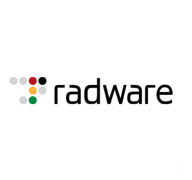


Azure Web Application Firewall and Radware Cloud WAF Service compete in the web application security sector. Data comparisons suggest Radware Cloud WAF Service has an edge with its advanced features.
Features: Azure Web Application Firewall integrates smoothly with Microsoft's ecosystem offering ease of use, DDoS protection, and threat intelligence. Radware Cloud WAF Service provides superior machine learning capabilities, real-time threat detection, and multi-cloud flexibility, showcasing advanced cybersecurity features.
Room for Improvement: Azure Web Application Firewall could enhance advanced features like machine learning and expand flexibility to other cloud platforms. Radware Cloud WAF Service may benefit from simplifying its deployment processes and reducing the complexity in multi-cloud integrations. Improved integration guides could help customers better utilize its capabilities.
Ease of Deployment and Customer Service: Azure Web Application Firewall is noted for its easy deployment within the Azure services and benefits from Microsoft's wide-ranging support structures. Radware Cloud WAF, while more complex, offers specialized deployment options across various cloud providers with responsive and effective customer service, known for handling complex deployment issues.
Pricing and ROI: Azure Web Application Firewall is cost-effective for Azure ecosystem users, yielding higher ROI. Radware Cloud WAF Service entails a higher initial cost but provides superior security measures, justifying potential long-term ROI through comprehensive protection.
WordPress security can be tricky, and that's where Cloudflare can be absolutely helpful for small businesses.
For the small project I was working on, using the basic tier provided a huge improvement at zero cost.
In terms of return on investment with Cloudflare, it costs my time to set them up, but basically once they're set up, it's done.
Recently, they have been under serious attack with major exploits, such as Log4j, affecting Fortinet and Palo Alto, and even Cisco and VMware.
AI-based recommendations save on time and money.
I wouldn't be able to give a number, but Radware Cloud WAF does save time for our staff due to the automation and excellent detection, which is invaluable.
With our on-prem solution, we spent a lot of time on maintenance tasks, OS updates, and ensuring appliances ran smoothly, but with Cloud WAF, all that is managed by the cloud team, allowing us to focus on alert analysis.
We get major insights from the analytics rules and dashboards, allowing us to pinpoint main issues.
This would help us address issues promptly, especially during unforeseen events like DDoS attacks.
Cloudflare does not offer hands-on technical support to fix customer problems but rather a self-service model.
I would rate the technical support with Cloudflare as excellent every time I've had to call them.
They are good at troubleshooting and configuring things.
I am very satisfied with the response from Microsoft dedicated architects if it happens that I have to call for their support.
I reached out to their support, and they helped me resolve the issue effectively.
On a scale from one to ten, I would rate the technical support that Radware provides for Cloud WAF Service a perfect ten.
I would give the Radware technical support a ten out of ten. They are definitely outstanding.
The support provided by Radware's Emergency Response Team is excellent.
It is a SaaS tool, but the fact that they have workloads deployed across the world proves that it is a highly scalable tool.
The tool offers very good performance, even during high-traffic periods.
I rate the solution’s scalability an eight out of ten.
Some Azure applications, like the web application firewall, require a certain level of SKU for hosting setup.
For our company, Azure Web Application Firewall works effectively for scalability.
The scalability of Radware Cloud WAF Service rates as a perfect ten out of ten, as we haven't encountered any scaling issues.
The scalability of the Radware Cloud WAF Service deserves a full ten, as it is definitely scalable.
In terms of scalability, it's also a 10 out of 10 because we are using Radware Cloud WAF Service for more than 60,000 employees in our organization, and it works perfectly fine.
For DDoS protection, I would not recommend Cloudflare.
I rate the solution’s stability an eight out of ten.
The service is very stable with no impacts during high-traffic periods.
Very rarely do I see any latency issues.
I have never encountered downtime, maintenance-related issues, or latency.
The stability of Radware Cloud WAF Service is excellent, and I would rate it as a ten.
The stability of Radware Cloud WAF Service is perfect; I would rate it a ten out of ten.
There's a need for improvement in areas like AI-based DDoS attacks and Layer 7 WAF features.
Despite these challenges, overall, Cloudflare remains the preferred solution compared to Azure, AWS CloudFront, and Google Cloud Armor.
Areas like how assessment, discovery, and payload are dealt with and how it all comes into your organization can be considered when trying to make suggestions to Cloudflare for improvements.
Upgrading the platform regularly is necessary for security, however, frequent updates every six months or year from Azure can be a maintenance overhead.
The pricing needs improvement, and I think for beginners it will be a little bit complicated, so the ease of use could be enhanced.
It would be beneficial if we could perform POST requests and integrate our applications more effectively.
The documentation is not up to par, as while the platform's system is robust, the documentation, particularly for API integration, could be more developer-friendly with real-world use cases.
Improving dashboard capabilities to provide this information clearly for management is crucial.
That's where Cloudflare shines for smaller businesses – it's ten times cheaper than Akamai.
I find it to be cheap.
The pricing for the service is reasonable, neither excessively cheap nor prohibitively expensive.
It is even a lower cost compared to AWS and GCP.
Sometimes, when opting for a higher SKU, it's not the WAF itself that's costly but the additional requirements.
I would place Azure Web Application Firewall at an eight on a scale from one to 10, with one being cheap and 10 being expensive.
Pricing could be more competitive, especially for smaller customers.
I find Radware Cloud WAF to be a quite expensive product compared to others.
The pricing is not cheap; it is expensive, but it is effective.
The most valuable features of the solution are performance and security.
Techniques like minification and image compression reduce the size of assets, leading to better performance and faster user load times.
The solution has been able to compare it to the market, and I think the product has taken great strides in automating quite a bit of things, and they use a lot of AI.
With Microsoft, everything is within a single suite, making it easier to configure and plan.
It is almost impossible to access these assets from outside, requiring a very skilled attacker to obtain asset tokens of a customer using Azure.
It integrates effectively with things such as Sentinel and Defender for Cloud, so mostly it's the analytics and now the AI capabilities that have been introduced with Co-pilot.
The most important aspect of Radware Cloud WAF is that it is over the cloud, offering a comprehensive solution that includes WAF, API protection, bots, and Layer 7 DDoS.
It has features such as API security that protect against advanced attacks, including business logic attacks.
The automated analytics for looking at events in Radware Cloud WAF Service are working for us; the automatic event correlation is very beneficial to analyze how the alerts and events occur and visualize the patterns of network traffic and other traffic going in and out from the application via Radware Cloud WAF Service.



| Company Size | Count |
|---|---|
| Small Business | 46 |
| Midsize Enterprise | 8 |
| Large Enterprise | 25 |
| Company Size | Count |
|---|---|
| Small Business | 6 |
| Large Enterprise | 12 |
| Company Size | Count |
|---|---|
| Small Business | 9 |
| Midsize Enterprise | 10 |
| Large Enterprise | 37 |
Cloudflare is a highly-regarded Content Delivery Network (CDN) and a Distributed Denial-of-Service (DDoS) protection solution. The robust global connectivity cloud platform that is Cloudflare ensures users are able to connect to the Internet quickly, securely, and reliably. Cloudflare is one of the world's largest networks in the marketplace today. Using Cloudflare, businesses, educational entities, NGOs, vloggers, bloggers, and anyone else with an internet presence can experience more secure, faster websites and applications.
Currently, there are millions of Internet locations on Cloudflare, and the Cloudflare network
continues to grow every day by the thousands. The solution is able to fulfill the requests for
millions of websites seamlessly and serves on average 45 million HTTP requests per second.
Cloudflare has safe, secure data centers in close to 300 cities worldwide to ensure every
client request is filled as quickly as possible. It is Cloudflare’s edge network that makes this
possible by keeping content and other services as close to each client as possible, so the
information requests are always only seconds away.
Many organizations that work in democracy, civil society, human rights, or the arts are able to
access Cloudflare's highest levels of protection for free via Project Galileo. Additionally, official
election websites can be secured from hacking and fraud through Cloudflare’s Project
Athenian, also at no additional cost.
Cloudflare can also help organizations of all sizes develop a robust zero-trust strategy to
ensure the highest levels of productivity and profitability. Employees, stakeholders, and end users have a greater level of satisfaction and overall improved user experience, which can, in
turn, result in higher revenues and overall ROI. Zero-trust and BYOD (bring your own device)
access ensure end users and employees always have the best resources and technology
available to them at all times.
Cloudflare benefits
Cloudflare has many benefits. Some of its most valuable benefits include:
- Faster load times
- Robust DNS security
- Intuitive cloud Web Application Firewall (WAF)
- Free universal SSL
- Image enhancement
- Automatic browser caching
- Next-generation cloud load balancer
- Accelerated Mobile Pages (AMP)
- Rate limiting
- Minification
- Zero-trust capabilities
- Cost-effective
- Reduced carbon footprint
Reviews from real users
“Many websites require an SSL certificate because they sell stuff and want SSL. Cloudflare
comes with an SSL certificate built in. It's automatic. You sign yourself up for Cloudflare, and
an SSL certificate automatically protects your website. If you have a connection between your
website and your host, the server, Cloudflare, and the host, you don't necessarily need a
certificate.” Spencer M., Owner at Tech Exchange
“What I like best about Cloudflare is that my company can use it to trace and manage
applications and monitor traffic. The solution tells you if there's a spike in traffic. Cloudflare
also sends you a link to check your equipment and deployment and track it through peering,
so it's a valuable tool.” Daniel P., Network Engineer at Ufinet
“The most valuable feature of Cloudflare is the GUI. You are able to control the solution very
well through the interface. There is a lot of functionality that is embedded in the service.” PeerSpot user, Competence Center Manager at a tech services company
Azure Web Application Firewall (WAF) provides centralized protection of your web applications from common exploits and vulnerabilities. Web applications are increasingly targeted by malicious attacks that exploit commonly known vulnerabilities. SQL injection and cross-site scripting are among the most common attacks.
To learn more about our solution, ask questions, and share feedback, join our Microsoft Security, Compliance and Identity Community.
Radware’s Cloud WAF provides enterprise-grade, continuously adaptive web application security protection. Based on Radware’s ICSA Labs certified, market-leading web application firewall, it provides full coverage of OWASP Top-10 threats and zero-day attacks, while implementing both negative and positive web application security models to automatically adapt protections to evolving threats and protected assets.
Radware’s Cloud WAF offers full web security protection including OWASP Top-10 coverage, advanced attack protection and 0-day attack protection by implementing both negative and positive web application security models. It provides organizations “frictionless” application protection by automatically detecting and protecting new web applications as they are added to the network through automatic policy generation technology.
We monitor all Web Application Firewall (WAF) reviews to prevent fraudulent reviews and keep review quality high. We do not post reviews by company employees or direct competitors. We validate each review for authenticity via cross-reference with LinkedIn, and personal follow-up with the reviewer when necessary.